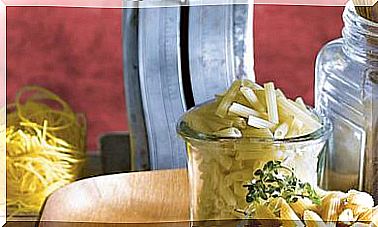“The Way Of Birth Influences Health”
Michel Odent is one of the highest authorities on natural childbirth: a pioneer of water birth, he studies the impact of birth at the Primal Health Center.

Together with Frederick Leboyer, author of the work For a birth without violence , Michel Odent is undoubtedly the researcher and disseminator who has fought the most for a humanized and non-traumatic birth for the baby and the mother.
Born in France 80 years ago, he graduated in surgery and soon began practicing obstetrics. He was the first doctor to introduce in a public hospital (the well-known maternity hospital of Pithiviers, south of Paris), the so-called water birth, using inflatable pools filled with warm water in order to facilitate labor for the mother.
He was also the ideologue of home-like birthing rooms (rooms with a homely and cozy atmosphere) for a more intimate birth.
After more than half a century attending births both in hospitals and in homes in France and England, Michel Odent now lives in London and together with Liliana Lammers he trains doulas.
He directs the Primal Health Research Center, whose objective is to study the first life experiences, from conception to the first year, and their impact on health and subsequent behaviors.
Michel Odent has published around fifty scientific articles and is the author of eleven books, translated into 21 languages, including: The baby is a mammal , The functions of orgasms, Fetal life, birth and the future of humanity (all them in Ed. Ob Stare) , or Caesarean section, problem or solution? (Ed. March Hare).
Intimacy and security: the best delivery conditions
– After having worked as an obstetrician for more than half a century, what would you say are the best conditions for childbirth?
–Undoubtedly, the easiest and fastest births usually occur when there is no one around the woman who is going to give birth, only a midwife or a doula –an experienced female figure who stays with her in silence–, giving her security, assisting her only when necessary. This is a situation that today’s midwives do not know because when we watch videos of natural birth, what we observe is a woman in labor surrounded by three or four people who are watching her: the father of the baby, who can be or not the cameraman, the midwife, the gynecologist … What must be rediscovered is that the first need of the woman in labor is not to feel observed, but safe.
“Why is this happening?”
– These needs are not particular to the human species. If a mammal about to give birth sees that there is a danger nearby, it stops giving birth. The adrenaline hormones that allow you to fight back or run will stop labor momentarily and then you can follow when you feel safe.
“The easiest and fastest births usually occur when there is no one around the woman who is going to give birth.”
–The number of births at home and in hospitals that perform natural or water births is growing. What do you think?
– We must hope that this awareness is not limited to a small group, which is what is happening today. What can this group that has reached a certain awareness do to transmit it to the entire population? I believe that if we want to be useful and engage others, we must become “bilingual” through a combination of languages: the language of intuition or the heart and scientific language. Today it is known for example that when a woman breastfeeds her child, she releases a cocktail of love hormones and this has been shown to have an important effect on the behavior of the baby. Thirty years ago it was difficult to transmit this knowledge to others because they were pure intuition and they did not quite believe us, but now it is easier if we offer a scientific explanation.
The questions of oxytocin
–Epidural anesthesia is used quite regularly during childbirth to relieve pain. How does this affect the child and the mother?
–It is difficult to answer this question precisely because the epidural is almost always associated with other interventions, the most frequent being the infusion of synthetic oxytocin. To give birth to a baby a woman must release a mix of hormones. The main one is oxytocin, which is very important because it contracts the uterus to facilitate the birth of the baby and the delivery of the placenta; It is also the hormone of love, which is involved in breastfeeding and emotional attachment between mother and child. When a woman receives an oxytocin infusion in a dropper, the oxytocin that the pituitary gland must release naturally is being replaced, while the epidural replaces the endorphins, that is, the morphine that the woman releases on her own to withstand the pain. As these pharmacological substitutes are associated, it is very difficult to know what the side effects of one intervention or another are.
–But there are studies that show, for example, that the epidural makes it difficult for the baby to rotate…
–Yes, it is true, and also that it shortens the breastfeeding period and the quality of that breastfeeding. But going back to the subject of oxytocin perfusion: notice that he asks me about the effects of epidurals and the statistics also talk about the effects of forceps, caesarean sections, cupping, but not about this practice itself, as if It was a minor detail, unimportant. We do not wonder if in a mother exposed for long hours to this infusion of synthetic oxytocin, in an induced labor –something very common nowadays–, she does not cross the placenta; or if the baby’s blood circulation is flooded by this synthetic oxytocin; or if it can reach the child’s brain; or if the high levels of said oxytocin in the mother can exert specific effects on receptor cells in the woman’s breasts that will play an important role in breastfeeding, because the milk ejection reflex depends on the oxytocin system. .. Today all this is not taken into account and I think it is of enormous importance.
–In the welfare society women have been made to believe that we cannot give birth by ourselves and the fear of not being able to bear the pain leads us to request a greater intervention. How can we regain the confidence in childbirth that our grandmothers had?
–Our grandmothers were also afraid. Since time immemorial, childbirth has been socialized and ritualized, women have been led to believe that they could not give birth on their own if there was no expert who could help them. A very subtle example is that through the centuries the idea has been passed down that when a child is born you have to cut the cord and, of course, that means that there has to be someone else to do that. Today we know that there is no physiological need to cut the cord.
– Should we then go very far back in time to find a different idea of birth?
-Yes. There are documents that tell us that in societies that did not yet know writing, women isolated themselves to give birth, they went to the forest or to a special hut. Until the births began to socialize and were increasingly difficult. And because they were more difficult they were painful, and because they were painful we looked for drugs to replace natural hormones that women cannot release under those circumstances.
Three types of cesarean section and their consequences
–Women who work increasingly want to have greater control of their life, including childbirth. Could this be a reflection of the increase in scheduled caesarean sections, especially in private clinics?
–It is true that there is a tendency to industrialize birth, just as we have done with agriculture, standardizing it. Regarding caesarean section, it must be emphasized that there are several types of caesarean section and that the effects on the child and the mother are different depending on the circumstances. There is a difference between caesarean section before the start of labor, which is scheduled caesarean section, caesarean section that is performed when labor has started but does not progress at one point, and emergency caesarean section.
– What differences are those?
–We have to take into account that during birth the baby is very active, that it participates at the beginning of labor and that during labor it is protected with hormones that end up maturing its lungs. Similarly, the mother’s body also releases hormones that prepare milk and have a noticeable effect on behavior. Well, when we schedule a cesarean section before labor begins, there is no secretion of hormones either in the baby or in the mother, and a priori we can imagine that this can lead to a significant disturbance. In the cesarean section that is performed when labor has begun but there comes a time when it does not progress, the context is different: the mother and the baby are in a very special hormonal state. While emergency cesarean section is the one that takes place when we realize that there is fetal distress and delivery becomes a race between the surgeon and the baby’s life.
“Caesarean section scheduled before the onset of labor increases the respiratory risks of the child.”
–The Primal Health Center that you direct studies how this and other forms of birth influence the health of the person. Do you know what problems a cesarean section can lead to, for example?
–There are studies done in Finland on asthma in children aged 7 and 8 years and in adults aged 31 and 32 years, and in both cases cesarean section appears as a risk factor, but there is no reference to what type of cesarean section. And that would be very helpful, because it is well known that scheduled cesarean section before the onset of labor increases respiratory risks. Today it is easy to study the interaction between genes and the environment. The Primal Health Center database indicates that there is a critical period for certain situations. For example, for autism the critical period is birth, but it is still difficult to determine the nature of that risk factor.
Primal health: what impact does pregnancy or childbirth have on future health?
–Can attention deficit disorder with or without hyperactivity be related to complications in pregnancy or childbirth?
–According to our database, the critical period for this problem is not located at birth but in the middle of pregnancy. If the mother has been exposed to corticosteroids in this period, it is a risk factor, as well as enduring very high levels of anxiety or smoking.
– To what extent does the way of birth influence the adult individual that we will be?
–This is a difficult question to answer because we are human beings and we cannot use animal models. When we disturb the birth of other mammals the effects are seen immediately, but not in humans. The woman who is pregnant can anticipate maternal behavior; On the other hand, the mammalian animal must wait for the day when its body releases a cocktail of love hormones in order to give birth and take an interest in its offspring. Without that cocktail of hormones, she would not worry about the puppy.
Another thing is: if we continue to replace love hormones when women are in labor, if those hormones become useless, what will it mean for civilization? When a child is born by cesarean section, it may still be alive thanks to this intervention. The accultural environment can compensate for this non-ideal birth. But further, the question is: what can happen in terms of civilization if all babies are born by caesarean section?
–Techniques such as rebirthing or holotropic breathing can help us understand aspects of our own birth?
–It is possible… I am struck by the fact that this generation of regressive therapies that allow, apparently, to revive situations of childbirth, developed from the 70s, a time when childbirth was enormously medicalized: electronic machines were incorporated , Obstetricians multiplied … And precisely in that period in which we especially complicate birth, we look for ways to give birth more easily, resorting to water birth and other alternative options. Thus arose primal therapy – with Janov’s book, The primal scream -, rebirthing … The question that assails me is: why does this need to relive birth suddenly arise? Maybe because internally we already knew how much our future was going to condition the way we started life.









